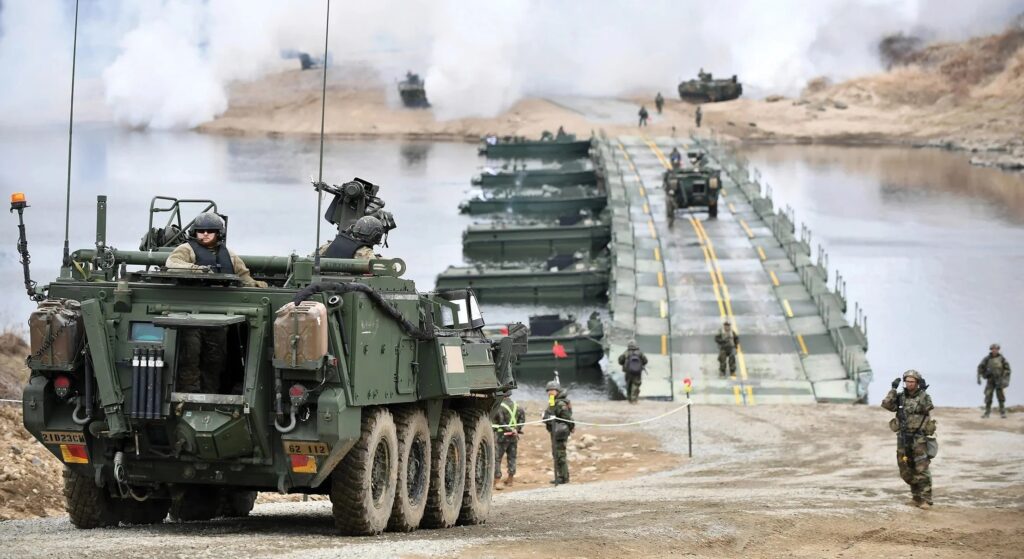The US Army should invest more in its wet-gap crossing capabilities to prepare for its role in future conflict, a new paper published by the Association of the US Army (AUSA) found.
Also known as river crossing, wet-gap crossing refers to where troops, tanks, and wheeled artillery weapons have to fjord inland water obstacles to reposition or seek out enemies.
It involves the deployment of boats and bridges, and it also requires extensive planning and detailed preparations, according to AUSA.
The paper noted the US Army has not conducted contested wet-gap crossing operations against near-peer threats since World War II, suggesting the need to conduct more drills and modernize its bridge-laying assets.
“After two decades of counter-insurgency operations in Iraq and Afghanistan, the US faces emerging threats in Russia and China,” author Maj. Aditya Iyer wrote.
“The Army must be prepared for large-scale combat operations against these near-peer threats. [In particular], the US military must be prepared to conduct wet-gap crossing operations against a well-organized and technologically advanced force.”
Learning From Russia-Ukraine War
The AUSA paper referenced the ongoing Russia-Ukraine war in which invading forces attempted to cross the Siverskyi Donets River – Ukraine’s fourth longest river.
Kyiv’s forces reportedly thwarted the effort with the help of small drone reconnaissance. Russian troops failed to employ combined-arms effects to assist in the crossing, according to the report.
“The successful Ukrainian defense of this river against one of the greatest global military powers should be concerning to the US Army as it considers the feasibility of accomplishing a wet-gap crossing operation in the current and future operating environment,” Iyer added.
The paper recommended the use of deception to carry out a successful river-crossing operation. This includes using more than just smoke to hide movements.
Other effective deception strategies should also be incorporated into the planning process so soldiers will know what to do before conducting actual wet-gap crossings, according to the paper.



